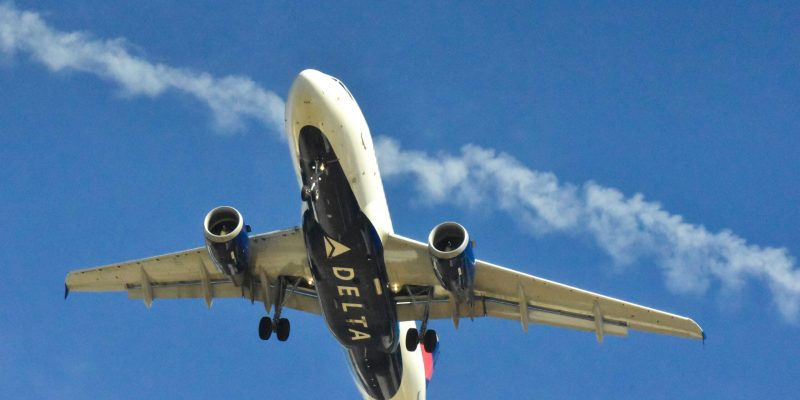
A Delta plane crash at Toronto Pearson International Airport has sparked an urgent investigation after a Delta Air Lines jet flipped onto its roof during a landing attempt.
The Bombardier CRJ900 aircraft, operating as Delta Flight 4819 from Minneapolis, crashed at approximately 2:15 p.m. local time on Monday.
Despite the severe impact, all 80 passengers and crew members survived, though 18 were injured.
The Delta plane crash comes amid heightened scrutiny of air travel safety following multiple fatal crashes in recent months.
Investigations are now underway to determine the cause of the Delta plane crash, with both Canadian and US authorities involved.
While strong winds and blowing snow were recorded at the airport, officials stated that the runway was dry and there were no significant crosswind conditions.
Two runways at Pearson remain closed as investigators comb through flight data and wreckage to piece together the sequence of events leading up to the Delta plane crash.
Delta crash: what went wrong?
Delta Flight 4819, operated by Endeavor Air, departed from Minneapolis/St. Paul International Airport without any reported issues.
Upon landing in Toronto, the aircraft experienced an unexpected and violent impact, causing it to flip upside down.
Passengers described a chaotic scene inside the cabin, with individuals hanging from their seatbelts before managing to free themselves and evacuate.
Meteorological data from the time of the Delta plane crash recorded winds at 32 mph, with gusts reaching 40 mph.
Despite these conditions, airport authorities have confirmed that visibility remained at five miles and that the runway was dry, raising questions about what specifically caused the aircraft to overturn upon touchdown.
The pilot’s communications with air traffic control had been normal before landing, with no immediate signs of distress.
Audio recordings from the control tower warned pilots of a potential air flow disturbance, but no direct cause for the Delta plane crash has yet been identified.
The Transportation Safety Board of Canada is leading the investigation, working alongside the US National Transportation Safety Board and the Federal Aviation Administration.
Passenger accounts reveal moments of panic
Passengers onboard the aircraft recounted the harrowing moments after the Delta plane crash. Some described feeling a sudden force before the plane lurched to the side and flipped over.
The impact sent luggage and personal belongings flying through the cabin, leaving many disoriented.
Despite the severity of the Delta plane crash, passengers were able to exit the overturned plane through emergency exits, aided by first responders who arrived within minutes.
Images from the scene showed the aircraft resting on its roof, its fuselage largely intact but emergency crews spraying down areas that had caught fire.
The Hospital for Sick Children in Toronto confirmed that one of the injured passengers was a child, who remains in stable condition.
Some of the 18 injured have since been discharged from medical facilities, while others continue to receive treatment.
Fourth major aviation incident in three weeks
The Delta plane crash is part of a troubling pattern of aviation accidents in North America. In the past three weeks alone, three other fatal incidents have occurred:
- A commercial jetliner and an Army helicopter collided near Reagan National Airport in Washington, D.C., on January 29, killing 67 people.
- A medical transport aircraft crashed in Philadelphia on January 31, resulting in seven fatalities.
- A small plane crash in Alaska on February 6 claimed 10 lives.
These incidents have reignited concerns over air travel safety and the need for stricter oversight on maintenance, pilot training, and aircraft performance in extreme weather conditions.
Next steps in the investigation
Authorities have sealed off the crash site for forensic analysis, with investigators focusing on flight data recorders, cockpit communication logs, and physical damage to the aircraft.
Endeavor Air’s leadership team has arrived in Toronto to assist in the investigation, while Delta Air Lines has pledged full cooperation.
US Transportation Secretary Sean Duffy has confirmed that FAA investigators are en route to Toronto, and he has been in direct communication with Canadian officials.
The airline industry is awaiting preliminary findings, as they could have broader implications for aviation safety standards following the Delta plane crash.
The last major accident at Toronto Pearson Airport occurred in 2005, when an Air France Airbus A340 skidded off the runway and burst into flames amid stormy weather.
As the probe into the cause of Flight 4819’s Delta plane crash unfolds, industry experts are calling for a renewed focus on safety measures, particularly in winter weather conditions.
In the meantime, Pearson International Airport continues to experience operational disruptions, with two runways expected to remain closed for several days.
The post Delta plane crash update: investigation underway to explain rare jet overturn on runway appeared first on Invezz









